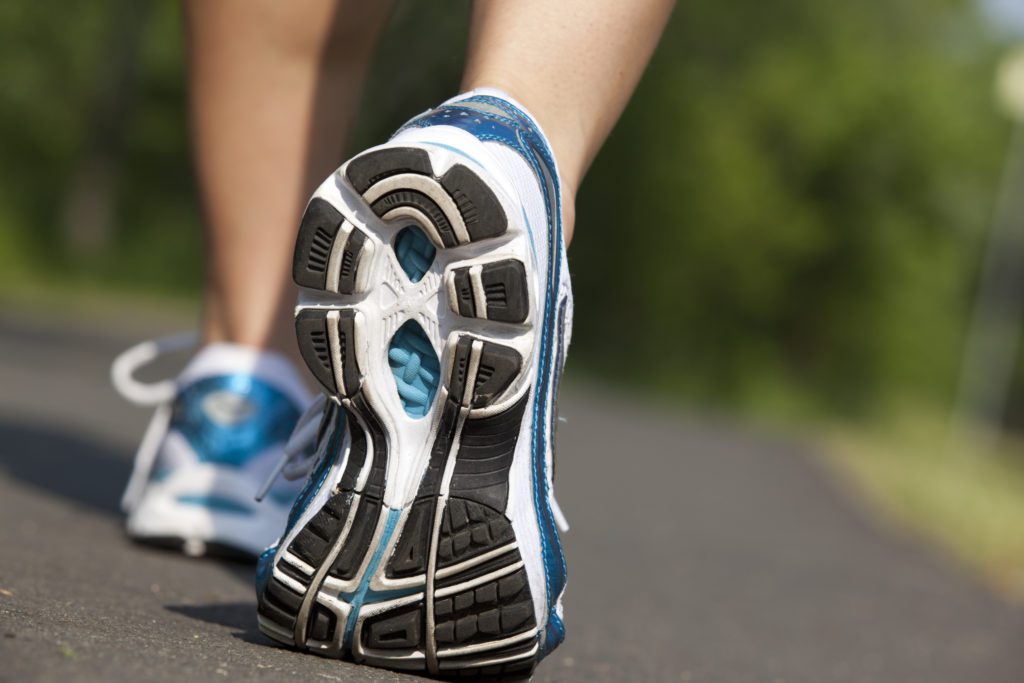Whether you run, walk, or participate in fitness classes, a quality sport shoe is essential. According to the American Orthopedic Foot & Ankle Society (AOFAS), the right shoe can help protect against injuries and enhance performance. Ready to invest in a quality shoe that’s built specifically for your sport?
You Run
Some runners prefer a well-cushioned running shoe that absorbs shock. Some runners prefer a minimalist running shoe with almost no cushioning. There’s no data to support which type of shoe is better, so it’s really up to the runner. If you like a cushioned shoe, choose one with overall shock absorption for the foot and good heel control. It can help prevent shin splints, tendinitis, heel pain, stress fractures and symptoms of overuse.

You Jog
The features of a good jogging shoe include cushioning, flexibility, control, and stability in the heel counter area – as well as lightness and good traction. These qualities can help prevent shin splints, tendinitis, heel pain, stress fractures and symptoms of overuse.
You Walk
You’ll want a lightweight walking shoe that has a comfortable soft upper, good shock absorption, smooth tread, and a rocker sole design that encourages the natural roll of the foot during the walking motion.
You Do Aerobics
Shoes for aerobic conditioning should be lightweight to prevent foot fatigue and have extra shock absorption in the sole beneath the ball of the foot (metatarsal area) where the most stress occurs. Whenever possible, you should work out on a carpet.
You Play Tennis
Tennis requires the body to move forward, backward and side-to-side. So tennis players need a shoe that offers stability on the inside and outside of the foot. The key to finding a good tennis shoe is its sole. A flexible sole beneath the ball of the foot allows for repeated, quick forward movements for a fast reaction at the net.
You Play Hoops
If basketball is your thing, choose a basketball shoe with a thick, stiff sole. This gives extra stability when running on the court. A high-top shoe may provide added support, but won’t necessarily decrease the risk of ankle sprain or injury.
You Like to Mix it Up
Cross-training shoes, or cross trainers, combine several of the above features so that you can participate in more than one sport. A good cross trainer should have flexibility in the forefoot needed for running, combined with lateral control needed for aerobics or tennis.
And Before You Lace Up, Here’s a Final Note
Generally, you should wear a sport-specific shoe if you participate in a sport more than three times a week. If you’ve managed to stay injury-free, then stick with the particular shoe you’ve been wearing. In other words, if it’s not broke, don’t fix it.

